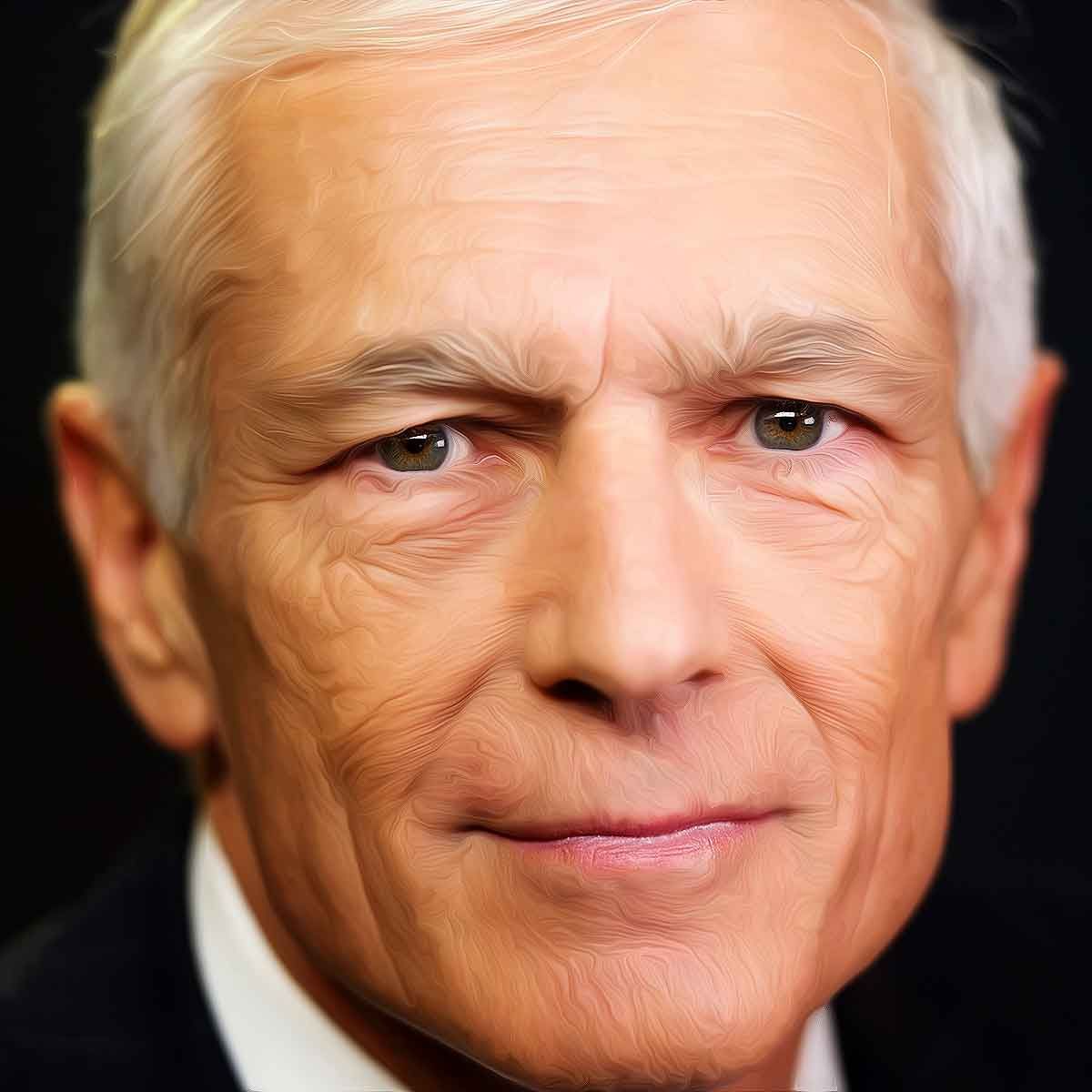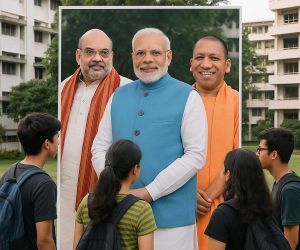MORE COVERAGE
Twitter Coverage
Satyaagrah
Written on
Satyaagrah
Written on
Satyaagrah
Written on
Satyaagrah
Written on
Satyaagrah
Written on
JOIN SATYAAGRAH SOCIAL MEDIA
"Whiff of election games": US charges of an Indian 'govt employee' paying $100,000 to a 'hitman' for Khalistani terrorist Pannun sound like a poorly crafted fiction, Nikhil Gupta contacting a DEA undercover agent for the Hit? A comically weak plot!

In a shocking revelation, the United States Justice Department has brought to light a sinister plot involving an Indian government employee allegedly attempting to hire a hitman to assassinate Khalistani terrorist Gurpatwant Singh Pannun in New York. The individual identified as CC-1, said to be an Indian government employee, remains shrouded in anonymity as per the indictment filed in a federal court in Manhattan. This revelation sheds light on the transnational dimensions of terrorism and highlights the alleged involvement of an individual linked to the Indian government.
|
According to the U.S. Justice Department, CC-1 recruited an individual named Nikhil Gupta to orchestrate the hiring of a hitman for carrying out the assassination plot. The department claims that the foiled plot was a result of U.S. authorities' intervention, preventing a potentially dangerous incident on American soil. The alleged involvement of a government employee in such a grave act raises concerns about the extent of influence and reach of such individuals, posing a threat not only to the intended target but also to the global community.
The intricate details of the plot, as outlined by the Justice Department, point to a calculated effort to eliminate Gurpatwant Singh Pannun. The involvement of Nikhil Gupta as the intermediary adds another layer to the alleged conspiracy, indicating a network of individuals working in tandem to carry out the assassination. The foiling of the plot by U.S. authorities underscores the importance of international cooperation in combating terrorism, as threats often transcend borders, requiring coordinated efforts for prevention.
This revelation also raises questions about the motives behind targeting Gurpatwant Singh Pannun, a known Khalistani terrorist. Understanding the geopolitical implications and the potential repercussions of such an act is crucial for comprehending the larger context of terrorism. The U.S. Justice Department's indictment serves as a stark reminder of the persistent threats posed by extremist ideologies and the imperative need for global vigilance and collaboration to thwart such nefarious plots.
|
The complaint outlines the intricate details of the conspiracy, revealing that Nikhil Gupta and his co-conspirators employed encrypted messaging applications like WhatsApp and Signal for covert communication and coordination of their activities. The use of such advanced communication tools underscores the clandestine nature of the plot, emphasizing the lengths to which the individuals went to conceal their nefarious intentions. The adoption of encrypted messaging platforms poses challenges for law enforcement, requiring innovative strategies to counteract potential threats conducted in the shadows of digital communication.
Surveillance emerged as a key component of the alleged plot, with Gupta and his co-conspirators reportedly conducting surveillance on the intended targets. This level of premeditated planning indicates a sophisticated approach to the assassination plot, involving careful consideration of the targets' movements and routines. The discussion of various methods of killing, such as shooting, poisoning, or using a car bomb, reflects a chilling level of detail and suggests a willingness to employ any means necessary to carry out the act.
The complaint also reveals that Gupta and his co-conspirators went beyond the initial plot, attempting to recruit additional individuals into their conspiracy. This expansion of the network points to a broader scheme with potential consequences beyond the initial target. Moreover, the alleged efforts to obtain weapons and explosives underscore the seriousness of their intentions, indicating a preparedness to escalate the scale and impact of their actions.
In a disturbing turn, the complaint details discussions about creating a fake organization to claim responsibility for the killings, attempting to justify the acts as self-defense or resistance. This strategic move suggests an awareness of potential consequences and a calculated effort to manipulate the narrative surrounding the planned assassinations. It raises questions about the individuals' ideological motivations and the broader context within which they sought to carry out such violent acts.
|
As Nikhil Gupta faces charges of murder-for-hire, which could lead to a maximum sentence of 10 years in prison, the legal proceedings will shed light on the evidence against him. The arrest and detention of Gupta by Czech authorities, in accordance with the extradition treaty between the United States and the Czech Republic, mark a significant development in the international efforts to address transnational threats and hold individuals accountable for their alleged involvement in such heinous plots.
The indictment from the US Justice Department unveils a disturbing plot orchestrated by an Indian government employee, identified as CC-1, and others, including Nikhil Gupta. The alleged conspiracy targeted a political activist, a US citizen of Indian origin residing in New York City. This revelation not only exposes the sinister intent behind the plot but also highlights the international dimension of the threat, emphasizing the need for collaborative efforts to counter such transnational crimes.
A particularly striking aspect of the case is the inclusion of a photograph in the indictment, capturing a moment of money exchange between two unidentified individuals. The obscured faces add an element of mystery to the visual evidence, underlining the covert nature of the operations. The exchange of money serves as tangible proof of the financial transactions involved in the conspiracy, reinforcing the criminal nature of the activities.
|
The indictment goes on to establish the association between Nikhil Gupta and CC-1, portraying Gupta's involvement in international narcotics and weapons trafficking. This additional layer of criminality deepens the complexity of the case, indicating that the individuals involved may have been part of a broader network engaged in illicit activities beyond the assassination plot. Gupta's communications with CC-1, detailing his participation in such illegal enterprises, provide insight into the multifaceted criminal background of those implicated in the conspiracy.
Furthermore, the indictment asserts that CC-1, believed to be in India, directed the assassination plot. This international link connects the conspiracy to India, raising questions about the motivations, affiliations, and potential involvement of elements within the Indian government. The detailed nature of the indictment, including specific roles and connections, contributes to a clearer understanding of the alleged conspiracy and the individuals behind it.
As the case unfolds, the revelations within the indictment will likely prompt further investigations into the international networks and criminal enterprises associated with the accused. The collaboration between the United States and Czech Republic in detaining Nikhil Gupta emphasizes the global cooperation required to address such complex threats effectively. The indictment serves as a crucial document in the legal proceedings, providing a comprehensive account of the alleged plot and the individuals involved.
|
In response to the charges, Assistant Attorney General Matthew G. Olsen emphasized the gravity of the situation, asserting that the dedicated law enforcement agents and prosecutors successfully thwarted a perilous plot to assassinate a U.S. citizen on American soil. While Olsen underscores the commitment to pursuing accountability for threats originating overseas, it's crucial to critically examine the context, especially considering Gurpatwant Singh Pannun's known association with Khalistani terrorism and his history of threatening India with terrorist attacks.
DEA Administrator Anne Milgram added another layer to the narrative, highlighting the audacity of a foreign government employee allegedly recruiting an international narcotics trafficker to carry out a murder in the United States. The DEA's intervention in stopping the plot underscores the agency's role in safeguarding U.S. interests against transnational threats. However, it's pertinent to explore the motives and affiliations of Pannun, who has been openly associated with Khalistani terrorism, a fact that might impact perceptions of the charges against those involved in the assassination plot.
The Justice Department's claim that CC-1 recruited Gupta for the assassination plot in May 2023 raises questions about the nature of the relationship between the Indian government employee and Gupta. While the charges suggest a clear case of conspiracy, understanding the broader geopolitical context is essential. Pannun's status as a proponent of Khalistani separatism adds complexity to the situation, leading to inquiries about whether the U.S. and FBI's actions are inadvertently shielding a known terrorist.
|
It's crucial to scrutinize the charges within the backdrop of Pannun's history, wherein he has consistently advocated for violence and terrorism against India. This context may influence public perceptions regarding the legitimacy of the charges, raising concerns about whether the justice system is inadvertently providing cover for individuals associated with terrorist activities. The Justice Department's commitment to pursuing accountability is commendable, but the nuanced geopolitical factors surrounding Pannun's background merit careful consideration in assessing the broader implications of the case.
The assertion questions the authenticity of the charges against Nikhil Gupta, drawing parallels to the controversial cases involving former President Donald Trump. The skepticism posits that if false charges can be leveled against a sitting U.S. President, similar doubts could arise regarding the veracity of the accusations against Gupta. The notion is supported by the argument that killing Gurpatwant Pannu, a Khalistani figure, might not be a top priority for India. Additionally, the suggestion that RAW, India's intelligence agency, wouldn't execute such a sloppy operation challenges the credibility of the entire plot.
The perspective posits that the U.S. Department of Justice is influenced by the U.S. State Department, suggesting anti-India sentiments among officials with liberal and Islamist backgrounds. This insinuation introduces a geopolitical dimension, framing the charges as potentially politically motivated. The analogy with Russia's tactics implies a sense of tit-for-tat in international relations, proposing an unconventional approach to securing Gupta's release.
|
The narrative delves into the alleged plot orchestrated by CC-1, involving Gupta contacting a supposed criminal associate, who turned out to be a confidential source working with the DEA. The introduction to a purported hitman, revealed to be an undercover DEA officer, adds layers to the intrigue. The claim that the FBI and the New York Police Department foiled the plot by arresting a U.S. citizen co-conspirator reinforces the seriousness of the charges. The fact that Gupta and other co-conspirators remain at large adds suspense to the unfolding narrative.
Gupta faces charges of conspiracy to commit murder-for-hire, carrying a maximum sentence of life imprisonment, and conspiracy to commit foreign travel in furtherance of murder-for-hire, with a maximum sentence of 10 years. The severity of these charges raises the stakes and emphasizes the gravity of the alleged conspiracy. The conclusion sets the stage for a complex legal battle, leaving readers in anticipation of the unfolding events and the potential geopolitical ramifications.
The narrative takes a critical stance toward Gurpatwant Singh Pannu, characterizing him as a "joker" while highlighting his history of making threats, including attacks on Air India planes and the Red Fort, as well as putting bounties on the heads of Indian diplomats. This portrayal sets the stage for a nuanced analysis of the charges against Nikhil Gupta, suggesting that even though Pannu may be considered a provocateur, the severity of the allegations against Gupta cannot be dismissed outright.
The narrative adopts a skeptical tone toward potential accusations from the opposition, cautioning that any attempt to implicate the Modi Government in an attempt to eliminate Pannu based on a U.S. judgment may backfire. The underlying implication is that such accusations could inadvertently work in favor of the BJP, potentially boosting their electoral prospects.
|
The disclaimer stating that the charges in the indictment are accusations, and the defendant is presumed innocent until proven guilty, adds a layer of legal context. This ensures a fair representation of the legal proceedings while emphasizing the need for evidence to substantiate the claims made in the indictment.
The article shifts focus to the broader context of the recent sharing of information by the U.S. regarding a nexus between organized criminals, gun runners, and terrorists. The formation of a high-level inquiry committee by India in response to these security concerns underscores the seriousness with which the Indian government views these developments. This inclusion provides readers with a broader geopolitical perspective, connecting the individual case of Gupta to larger security issues.
The concluding statement from the Ministry of External Affairs (MEA) reinforces the gravity of the situation, emphasizing that India takes such inputs seriously as they impinge on national security interests. The acknowledgment that relevant departments are examining the issue sets the stage for potential diplomatic and security implications, leaving readers anticipating further developments.
The inclusion of the Ministry of External Affairs' (MEA) statement adds an official perspective to the unfolding events. The formation of a high-level inquiry committee by the Government of India on November 18 reflects a proactive approach to thoroughly investigate all relevant aspects of the matter. This move underscores the government's commitment to addressing the security concerns raised by the U.S. Justice Department.
Aslo there is focus on another Khalistani terrorist, Hardeep Singh Nijjar, who was murdered in Canada. The justice department's characterization of Nijjar as 'another Sikh separatist leader' and the alleged communication between the Indian government employee and Nikhil Gupta highlight a broader network of individuals associated with separatist activities. This broadens the scope of the narrative, suggesting interconnectedness between different figures within the Khalistani movement.
|
President Joe Biden governtment internal security is already in shambles due to the threat posed by Gurpatwant Pannu and the assertion that the U.S. is a "terrorist-feeding country" reflects a strong and confrontational stance. The narrative accuses the U.S. of shadow boxing and double dealings, framing their actions as inconsistent with democratic principles.
The raises serious questions on the believability of the U.S.'s narrative, particularly in detailing the alleged involvement of an R&AW sub-contractor in the murder plot. The incredulity is expressed through sarcasm, highlighting the absurdity of R&AW officers engaging in a video call with a killer in a conference room. The questioning of digital footprints adds a layer of skepticism, questioning the authenticity of the evidence presented by the U.S. Justice Department.
The article concludes with a cautionary note about potential damage to India-U.S. relations. It questions the wisdom of the U.S. not cooperating fully and immediately with India in prosecuting and punishing Gurpatwant Pannu, a known Khalistan terror supporter. The article suggests that the U.S.'s handling of the situation may jeopardize the hard-fought progress in India-U.S. relations, portraying the U.S. as an unreliable and selfish partner. The closing question probes whether supporting Khalistanis is worth damaging the ties between the two countries.
 Support Us
Support Us
Satyagraha was born from the heart of our land, with an undying aim to unveil the true essence of Bharat. It seeks to illuminate the hidden tales of our valiant freedom fighters and the rich chronicles that haven't yet sung their complete melody in the mainstream.
While platforms like NDTV and 'The Wire' effortlessly garner funds under the banner of safeguarding democracy, we at Satyagraha walk a different path. Our strength and resonance come from you. In this journey to weave a stronger Bharat, every little contribution amplifies our voice. Let's come together, contribute as you can, and champion the true spirit of our nation.
 |  |  |
| ICICI Bank of Satyaagrah | Razorpay Bank of Satyaagrah | PayPal Bank of Satyaagrah - For International Payments |
If all above doesn't work, then try the LINK below:
Please share the article on other platforms
DISCLAIMER: The author is solely responsible for the views expressed in this article. The author carries the responsibility for citing and/or licensing of images utilized within the text. The website also frequently uses non-commercial images for representational purposes only in line with the article. We are not responsible for the authenticity of such images. If some images have a copyright issue, we request the person/entity to contact us at This email address is being protected from spambots. You need JavaScript enabled to view it. and we will take the necessary actions to resolve the issue.
Related Articles
- “Monkeypox is demonstrating why smart people stay in monogamous relationships”: Defense Department spokesman Maj. Charlie Dietz announced the number of cases of monkeypox climbed tenfold in the U.S. military in less than four weeks ago
- "गज़ब्बे है": Another assassination attempt on Donald Trump at his Florida golf club, with shooter Ryan Routh, a Democrat supporter who donated 19 times since 2019, targeting Trump with an AK-47; Routh also supported Tulsi Gabbard, now a Trump ally
- "Terrorism is the price of empire. If you do not wish to pay, you must give up the empire": Biden vows continued cooperation with Hamas-linked Islamic Society of North America, no concern on Left for Islamic jihad as it doesn't exist; “Islamophobia” does
- "What can be asserted without evidence can be dismissed without evidence": After sitting on Hunter Biden’s laptop for years, feds finally believe they have the goods to arrest him. You know it’s bad when the commies at Washington Post are writing about it
- "When a warMonger lectures about peace, you know hypocrisy has found its poster child": Obama, the 'Nobel Peace Prize' laureate with a track record of 'peaceful drone strikes', architect of Middle East chaos lectures our Modi on human rights. That's rich!
- "True art awakens the Extraordinary Ovation": 15 standing ovations, 79 applauses, autographs, selfies, and the whole house echoing with ‘Modi Modi slogans, Prime Minister Modi's joint address to the US Congress resonated as a resounding success
- "That's the worst thing about dementia: it gets you every time": Old Joe Biden isn’t all there, confident and full of bravado, the senescent and dementia-ridden read off his teleprompter: “Let me start off with two words: made in America. Made in America”
- Joe Biden’s Department of Agriculture is planning to withhold funding for school lunch programs, effectively forcing poorest children in America to starve unless public schools agree to groom students into a lifestyle of transgenderism / LGBT
- “By a lie, a man... annihilates his dignity as a man”: Zawahiri dead? Maybe true, but people such as al-Zawahiri tend to die more than once, several sources claim that Al-Qaeda top dog Ayman Al-Zawahiri has died of natural causes in Afghanistan
- Adding to the grim tally, Indian students Nivesh Mukka and Goutham Parsi killed in a fatal car crash in Arizona; both enrolled at Arizona State University, their untimely demise underscores the ongoing safety challenges faced by Indian students in the US
- "Things we can’t see affect our lives much more than we think": Money Heist - More than $200 billion may have been stolen from COVID-19 pandemic-relief programs, these Funds were meant for assisting small businesses hit by pandemic - federal watchdog
- Semiconductor Titans, Micron, Applied Materials, and Lam forging robust alliances with India, unveiling monumental billion-dollar investments to significantly bolster India's Semiconductor Mission and usher a future of unprecedented tech advancements
- Trump, who bizarrely bragged about brokering an India-Pakistan ceasefire that India never acknowledged, unleashed 2,000 troops on LA streets as ICE snatched 118 immigrants, protesters choked on tear gas, a journalist was shot, and democracy gasped for air
- "Irony became the head that bit its tail and then there is no way out": Stanford University released a list of ‘harmful words’ and what to replace them with, also banning the word “American” on its websites because the term may be offensive
- Modi's Landmark USA Visit: PM Modi engages with thought leaders, think-tank strategists, American CEOs and Influential Figures for Enhanced Collaborations, ‘This visit showcases strength and resilience of the India-US partnership,’ says Trump admin

























